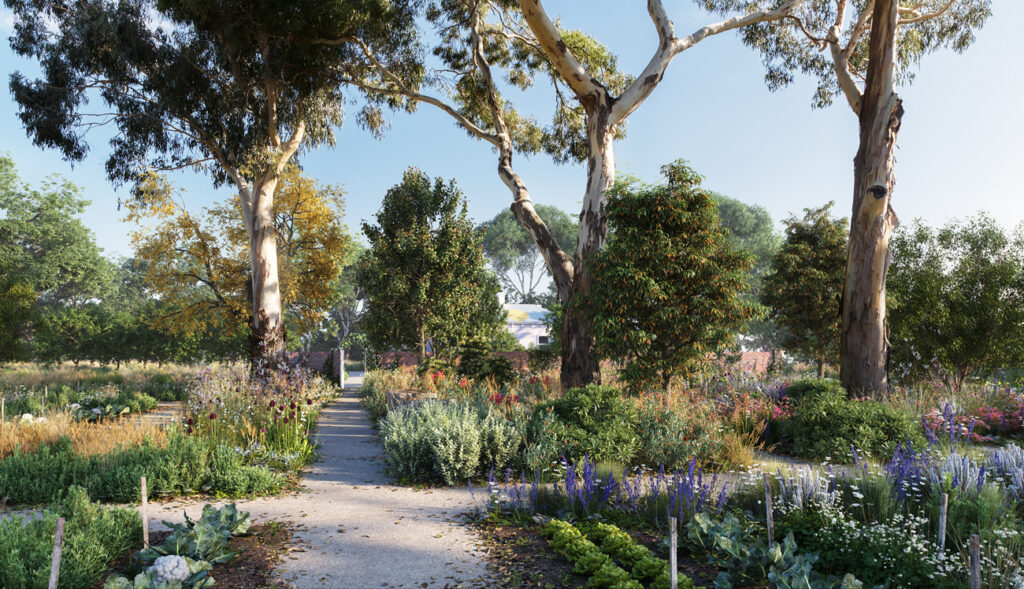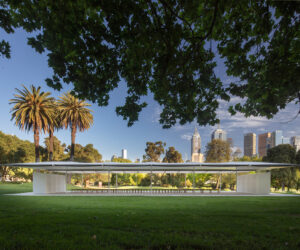Heide Museum of Modern Art reveals design details for new Healing Garden
Heide Museum of Modern Art and leading landscape architecture studio Openwork have revealed design details for the new Healing Garden. Inspired by Heide founder Sunday Reed’s profound love for her garden, the Healing Garden draws on the curative properties of plants and the ever-growing body of knowledge that positions gardens as a powerful tool for connecting communities, reducing social isolation and providing positive, life-affirming experiences.
Slated to open in late 2020, the garden has been designed to facilitate healing and restoration for vulnerable communities and will now be a vital space for the broader community in the wake of COVID-19. Circular in design, the garden draws on the concept of proxemics which considers the boundary between personal and public space and the amount of space that people feel is necessary to set between themselves and others.
Heide Artistic Director Lesley Harding said, “For Sunday Reed, who founded Heide with her husband John, gardening went hand-in-hand with art, poetry, cooking, love and life. Her garden was a creative outlet and a place of respite and rejuvenation. Like Sunday, the Heide team today recognise that gardens and nature can help improve people’s wellbeing and restore a sense of equilibrium, something that will be particularly important in the coming months.”
The new Healing Garden is situated between Sunday Reed’s original heritage-listed kitchen garden and the brick wall of the Heide cottage, which is the most wheelchair accessible garden on-site. Incorporating six distinct clusters of different planting styles that each facilitate a variety of sensory activities, the design is sensitive to Sunday Reed’s original paths and trees. Throughout these clusters will be a series of nooks that have developed existing spaces into social areas, including seating made from leftover limestone from Heide Modern.
Openwork Senior Landscape Architect Elizabeth Herbert commented, “Using existing structures and plants the design looks to heighten the experience of nature and create a protective space within the wider Heide garden. In many ways the Healing Garden sums up the broader Heide ethos and garden experience in one space. By creating small moments through different planting styles, strategic seating placement and sensory activities, the garden’s design invites visitors to pause, occupy the space around them and ultimately own their experience.”
The garden features six clusters of different planting styles that each facilitate a variety of sensory activities:
- As visitors enter the garden, they encounter Scented Entries that use strongly fragrant plants, including Sunday Reed’s original roses, to mark the transition into the space using the sense of smell as well as visual markers
- The Sensory Kitchen Garden shares a boundary with Heide I’s current kitchen garden and will include edible plants that activate the sense of taste
- The Haptic Play Garden focuses on younger visitors who may be on the autism spectrum and includes a tactile water play that can be touched and heard
- The Bush Tucker Garden builds on the Indigenous plants currently in the garden by incorporating a large piece of stone that acts as a proxy table where Bush Tucker can be ground, touched and smelled
- The Meadow, the largest of the clusters, draws on the New Perennial and herbaceous gardens movement, pioneered by Gertrude Jekyll, who was an influence on the Reeds. The Meadow will be defined by a seemingly wild, rambunctious but curated planting style that emphasises seasonal change and immersive experience
- The Wild Garden is a response to the climbing roses that characterise the wall and arbors of the original garden and creates a space that is carefully maintained to appear wild.
Openwork Director, Mark Jacques concludes, “By turning up the volume on the diversity, colour, texture, and sensory stimulus, the Healing Garden is inherently a space defined by surrender and escape from the everyday, a place to recharge and step away from normal behaviours. As visitors walk through the garden we hope they will slow down, hear the birds and leaves swaying the wind, see the butterflies, smell the flowers and accept the invitation to pause and mindfully explore the detail around them.”



